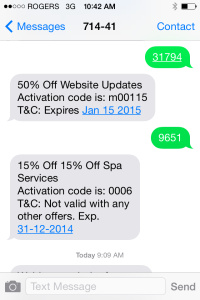 Although the entry barrier to online businesses such as e-commerce is lower than for their offline equivalents, making a success of your enterprise is far from guaranteed.
Although the entry barrier to online businesses such as e-commerce is lower than for their offline equivalents, making a success of your enterprise is far from guaranteed.
Fortunately, there are countless web tools that you can use to help you get your business where you want it to be. Not all of these tools come cheap though, which can be off-putting for a fledgling project unsure of how much they can afford to spend on something that might prove unnecessary.
Thanks to the people behind our favourite search engine however, one of the most powerful tools available to help you optimize your marketing strategy is completely free.
Google Analytics is available to everyone, easy to set up, and gives you insights into where your traffic is coming from and what they are doing once they arrive, helping you to study the following data and make the tweaks that will improve your conversion rates.
Preferable referrals
Google Analytics allows you to see where your traffic is coming from, including those being sent there by way of referrals. This category tells you which websites are directing traffic back to your website, how much they are sending, and what it’s doing when it’s there.
If you’re paying for any online advertising as part of your marketing strategy, perhaps from the big yellow book company or other directory sites, this data can help you decide if this is money well spent or not.
If after analyzing your referral traffic you feel the amount is too low, or that the bounce rate is too high, you may want to consider dropping some of the referral services you are currently not getting value for money from and concentrating on the ones that you are.
Social engagements
Getting the most out of social media is a key part of any good marketing strategy, and Google Analytics can help you see how well your own efforts are faring.
By looking at the statistics in the Social tab, you will find exactly which of the various platforms you’re posting on are performing well, and which aren’t.
Are you getting more traffic from Twitter than from Facebook? Does your traffic from Instagram stick around longer than those who came from Pinterest? Do those coming from Google+ or LinkedIn look at more pages? Who makes the most comments? Who bounces?
And now that you know, what are you going to do with the information? Will you concentrate more on those who already perform well, or try to bring the others up to speed too?
The choice is yours, but at least now you have the data to help you decide.
Content with your content?
If you’re regularly paying for or writing your own blog posts, producing videos, creating infographics, or any other type of content as part of your marketing strategy, it needs to be hitting its intended mark if you’re to be successful.
Another way of using Google Analytics to help optimize your marketing strategy is to learn what type of content really resonates with your visitors and what leaves them unimpressed.
By measuring what content people like, by noting how long they’re spending on the different types and how often people bounce from them, you can get an idea of what topics people are interested in, whether videos are adding value to your marketing strategy, or if the time spent creating infographics is worth it.
As a free tool, Google Analytics provides priceless insights into the behaviour of your web traffic, helping you to optimize your marketing strategy by understanding where your audience is coming from, how effective your social media is, and what type of content you should concentrate on going forward.
To learn more about Google Analytics, watch our Youtube channel here:
 Since its inception around a decade ago, Facebook has grown and evolved into something far bigger and far different to anything the creators could ever have imagined.
Since its inception around a decade ago, Facebook has grown and evolved into something far bigger and far different to anything the creators could ever have imagined.













